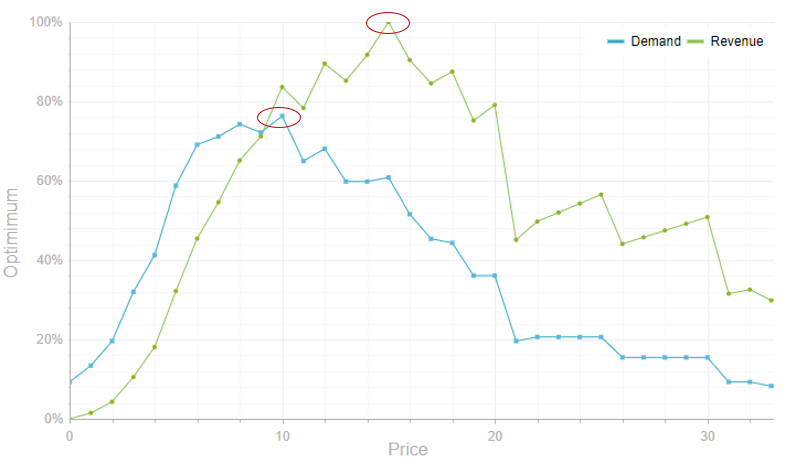Geographical Pricing: How to Price Different Locations
 PriceBeam
·
3 minute read
PriceBeam
·
3 minute read

When you call to order takeout (if you do), one of the first things you’ll be asked is your postcode or address. You haven’t even put your order yet, but, if you get this question “wrong”, you’re disqualified immediately. Such restaurants have drawn a clear line as to how far away they deliver food. They know that once this line is crossed, in 95% of the cases the sale is not profitable; margins are simply too thin.
Of course, it doesn’t have to be that way: You, the buyer, could offer to pay a premium for the extra trouble they must go through to deliver the food; or you could, in theory, call up a currier, and arrange the food delivery on your own; or, if the takeout place wants to give the restaurant next door a run for its money, they could suck it up and deliver the food anyway.
Most takeout places do not have advanced logistic systems in place, and therefore, they tend to opt for the simpler option that is uniform delivery pricing: everyone is charged the same, although to be eligible for delivery at all, you must be within a certain distance.
However, the uniform delivery pricing strategy is often suboptimal, which is why other geographical pricing strategies have emerged.
Geographical pricing is the practice of modifying prices to reflect the geographical location of the buyer and the associated shipping cost. In this article, we will review a few of the most common geographical pricing strategies, and give our conjecture on how firms should handle buyers in different locations.
#1: Uniform Delivery Pricing (or postage stamp pricing)
Everyone is charged the same for delivery. Period. This is, indeed, a very simple way to set delivery prices, but also inferior. Firstly, for this to be viable, you need to enforce some restrictions: obviously, the local Chinese takeout place cannot deliver $10 worth of chow mein to every corner of the world. And when a uniform delivery pricing strategy is applied, the restrictions will often limit the potential of your business. After all, the customers that currently won’t be able to order your products might want them really badly, and don’t mind paying a little extra. Therefore, uniform delivery pricing may be fine if you’re a local takeout place, but if you’re a national or international retailer, this is an absolute no-go.
#2: FOB Origin (Free Onboard Origin)
This is a very commonly used geographical pricing strategy, where the shipping cost is simply borne by the seller. So if you’re living in the middle of nowhere you can still get the product delivered, but it will cost you.
This is a great strategy for a number of reasons: first, customers won’t feel sore about a high shipping cost as it is completely justified. After all, you, the seller, won’t profit from it, right?
Moreover, as icing on the cake, you can offer several delivery options so that they themselves can decide whether to go for the budget delivery service, or the premium express delivery service. In that way, they’re completely in charge of their own fate, and won’t feel any resentment towards you. Alternatively, customers should always get the opportunity to arrange the delivery themselves. While facilitating the delivery is a nice service, the distinguishing characteristic about this geographical pricing strategy is that it is ultimately up to the buyer how the product is delivered.
There is one drawback to this strategy, however: While the customer may understand and accept that the shipping cost reflects the distance, it is still a cost: and at the end of the day, the customer’s distance to the seller won’t influence his willingness to pay. In fact, people living in rural areas, for instance, often have a low purchase power, while those living right in the center will have a high purchase power. With FOB Origin pricing, the price won’t be perfectly aligned with willingness to pay.
#3: Zone Pricing
Like with FOB Origin pricing, the zone pricing strategy involves charging a higher price to customers for whom shipping is costly. This strategy is different in that, with zone pricing, the seller always handles the delivery, and can arrange the sort of transportation he wishes, and moreover, set the price he wishes: the delivery may still be carried out by a third party firm, but it is up to the seller to facilitate this.
Zone pricing has the same drawback as FOB origin, that is, there is no reason to believe that shipping cost is tied to willingness to pay in any way, and therefore, this method may be suboptimal from a value pricing perspective. Moreover, the upside that is the transparency in FOB Origin pricing is not present to the same extent, as the buyer has less say in delivery costs and choice of carrier.
That being said, it is much more simple than FOB Origin, and the ideal strategy for most retailers as it is simply impractical to make individual arrangement with every single customer whenever they place a $50 order.
#4: Freight-Absorption Pricing
Finally, the seller can choose to pick up the bill, or part of it. It is rarely ideal, unless you’re selling high-margin products where the shipping cost is very small relative to the price, and thus the delivery cost would be so insignificant that is not worth bothering the customer with it. This, of course, only applies to very few businesses.
However, it may be useful for other businesses too, as a mean to lower prices without damaging the brand and the brand positioning. While absorbing the shipping cost is ultimately the same as lowering the price, it is not perceived this way and may play out to your advantage if you’re selling a relatively premium product.
.png?width=400&height=100&name=PBLogoTransparent%20(1).png)


-1.png)

